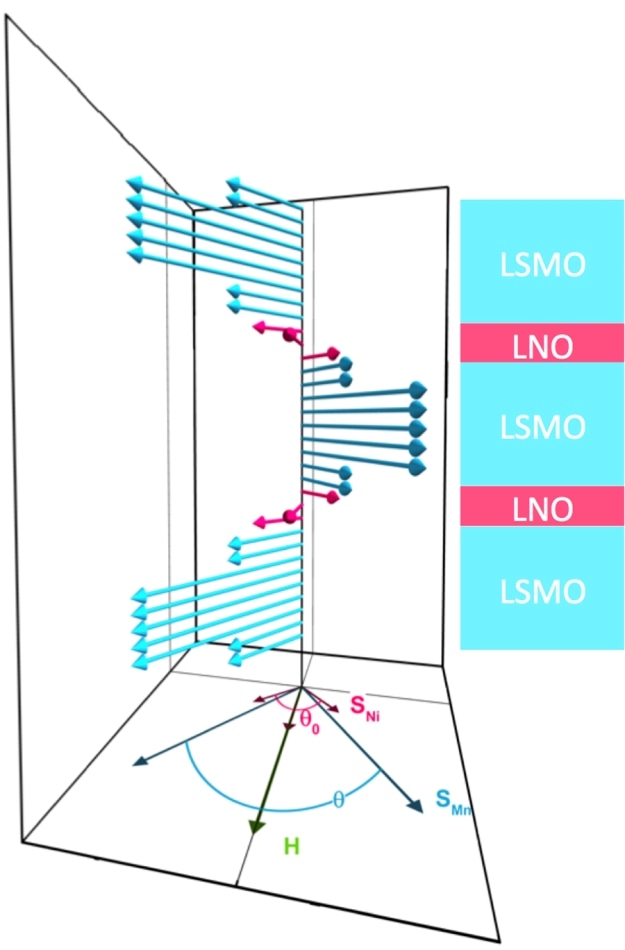Mar 3 2017
 A diagram showing the "spiral" of noncollinear magnetic orientations (in pink) of a nickelate material next to a manganite material (Image by Anand Bhattacharya/Argonne National Laboratory.)
A diagram showing the "spiral" of noncollinear magnetic orientations (in pink) of a nickelate material next to a manganite material (Image by Anand Bhattacharya/Argonne National Laboratory.)
A new study from the U.S. Department of Energy’s (DOE) Argonne National Laboratory, highlights the possibility of swaying certain materials by their neighbors in order to become magnetic, similar to a group of undecided voters.
Led by materials scientist Anand Bhattacharya, a team of Argonne researchers studied the relationship at interfaces between layers of non-magnetic nickel-based nickelate material and a ferromagnetic manganese-based manganite. The samples were grown at Argonne’s Center for Nanoscale Materials, a DOE Office of Science User Facility.
These samples were grown with single atomic layer precision using molecular beam epitaxy, by Jason Hoffman, postdoctoral researcher and first author on the study.
The researchers discovered that the non-magnetic nickelate suddenly became magnetic when electrons flowed out of the manganite into the neighboring nickelate. However, the nickelate did not become magnetic in a typical way.
Most magnetic materials are “collinear” – the magnetic orientations of the electrons in the materials are set in the same direction or in the opposite direction – that is, what is called as “north” or “south.” However, in the case of the affected nickelate, when the electrons flowed they produced a magnetization with a twisting pattern like that in a helix.
According to Bhattacharya, although nickelate is nonmagnetic on its own, it possesses specific proclivities that make it a good candidate for being “willing to be swayed.”
The measure that scientists use to quantify how much a material wants to be magnetic is called ‘magnetic susceptibility. The nickelate has a very peculiar magnetic susceptibility, which varies from atom to atom within the material. Under the influence of the neighboring manganite, the nickelate becomes magnetic in a surprising way, causing a non-uniform helical magnetic structure to develop in the nickelate.
Anand Bhattacharya, Materials Scientist, Argonne National Laboratory
According to Bhattacharya, it is not easy to customize magnetic noncollinearity in the laboratory. “This noncollinear twisty magnetism is shown by only a very few types of materials and is quite rare in nature,” said Bhattacharya. “It’s an exciting property to have in a material because you could conceivably use the different magnetic orientations to encode data in a novel kind of magnetic memory, or to nucleate new kinds of superconducting states that might be useful in a quantum computer.”
The November issue of Physical Review X featured an article based on the research, “Oscillatory Noncollinear Magnetism Induced by Interfacial Charge Transfer in Superlattices Composed of Metallic Oxides.” The DOE's Office of Science funded the Argonne research. Additional portions of the research were performed at the National Institutes of Standards and Technology.